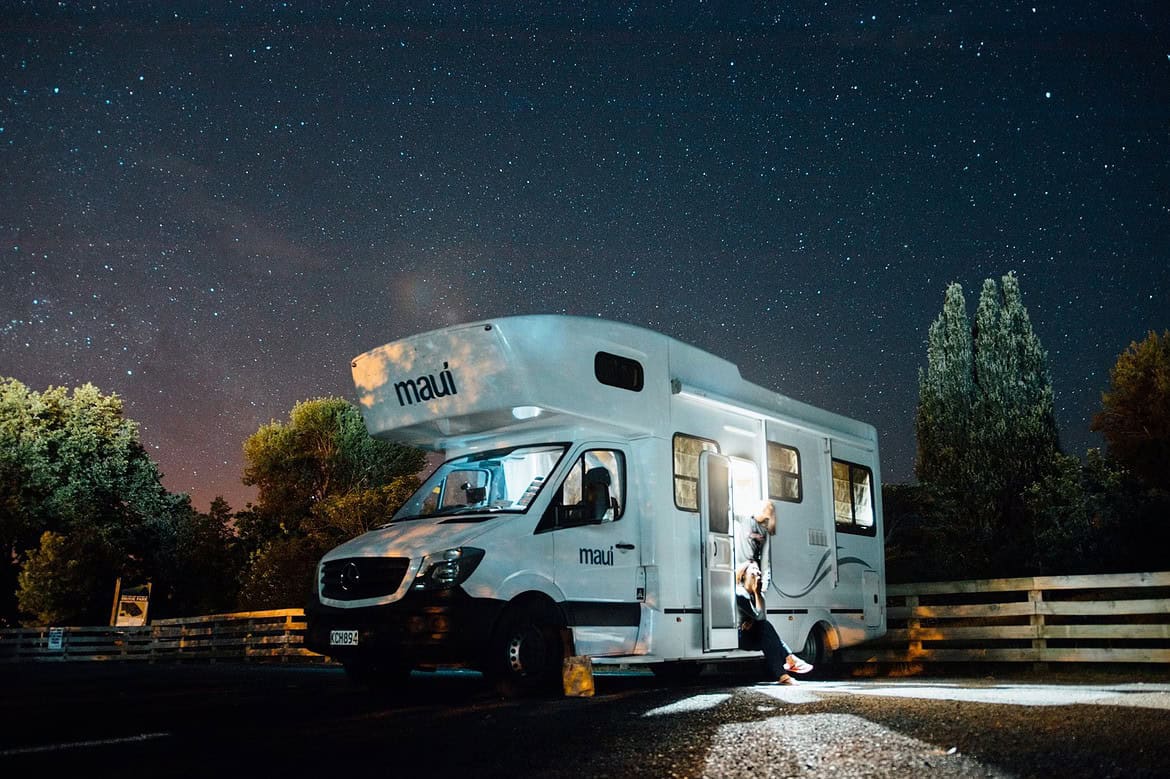Your RV is your passport to adventure, a mobile home that allows you to explore stunning scenery and have unique adventures. But just like any well-loved possession, it requires care and attention to stay in top shape. Regular maintenance goes beyond oil changes and tire checks. By proactively addressing potential problems before they arise, you can significantly extend your RV’s lifespan.
Roof Maintenance
The roof is your RV’s primary shield against the elements. Rain, snow, scorching sun—it all takes a toll on the roof membrane, making it susceptible to cracks, leaks, and premature aging. Regular roof maintenance prevents these issues and ensures your RV’s interior stays dry and protected.
Make sure to examine your roof thoroughly at least twice a year. Examine vent and seam areas for evidence of wear and strain, such as cracks, bulges, or missing sealant. Look for any debris that might have moisture or block drains.
Regularly clean your roof with a mild soap solution and a soft brush. Clear away any debris, such as bird droppings, twigs, or leaves. Once clean and dry, it’s time to apply an RV roof sealant. But first, you need to learn about RV roof sealant before applying it.
Here’s why learning about RV roof sealant is important: Different sealants exist, each suited for specific applications. Neighbor.com notes that self-leveling sealants are ideal for rubber roofs, while specialized silicone works best on aluminum RV roofs. For minor tears, sealant tape might be the answer.
By understanding the different types of RV roof sealants available, you can choose the product that best addresses your RV’s needs.
After familiarizing yourself with RV roof sealants, choose a high-quality product specifically formulated for your RV’s roof material (fiberglass, rubber, etc.). For maximum adhesion and long-lasting effects, always apply products according to the manufacturer’s directions.
Silver Spur RV Park notes that if you discover any cracks, tears, or leaks, don’t delay repairs. In case of serious damage, either apply a patch made especially for RV roofs or contact a specialist. These simple actions can help you save your investment from expensive repairs and greatly increase the longevity of the roof on your RV.
Preventing Leaks Throughout Your RV
While the roof takes the brunt of external moisture, leaks can occur anywhere in your RV. Regular checks and preventative measures can stop leaks before they cause significant damage. Pay close attention to areas around windows, doors, vents, and plumbing fixtures. Over time, these areas can develop cracks in the sealant, allowing water intrusion.
Apply a high-quality RV sealant to these areas at least once a year, focusing on corners and seams. Inspect windows and doors for proper operation and watertight seals. Replace any cracked or worn weather stripping to ensure a snug fit and prevent water leaks. According to Bob Vila, repairing water damage in an RV can cost anywhere from $20 to $2,800. The final cost of repairs depends on the extent of the water damage.
Regularly inspect plumbing connections for tightness and signs of wear. Use leak tape on threaded connections and tighten any loose clamps.
Consider winterizing your RV if storing it in freezing temperatures to prevent pipes from bursting. By proactively sealing potential leak points and maintaining your plumbing system, you can safeguard your RV’s interior.
Internal Systems
Your RV’s internal systems are the lifeblood, ensuring everything from comfortable living conditions to safe operation. Regular maintenance keeps these systems running smoothly and prevents unexpected breakdowns. Just like your home appliances, your RV’s refrigerator, stove, and air conditioner require regular cleaning and maintenance.
Refer to your owner’s handbook for detailed cleaning procedures and suggested servicing intervals. Batteries are the foundation of your RV’s electrical system. Make sure your batteries are corrosion-free and spotless. Check the water levels in flooded lead-acid batteries regularly and replenish with distilled water when needed.
Consider upgrading to AGM (absorbed glass mat) batteries for longer lifespan and lower maintenance needs. According to autobatteries.com, AGM is an advanced lead-acid battery designed to meet the higher electrical demands of modern vehicles and start-stop applications. These batteries are highly resistant to vibration, completely sealed, non-spillable, and maintenance-free. Compared to conventional lead-acid batteries, AGM offers better cycling performance, minimal gassing, and reduced acid leakage. An even better solution are LiFePO4 batteries. These safe lithium batteries require a bigger investment up front, but have much higher useful capacity and longer lifespan.
If your RV has a generator, plan routine maintenance according to the manufacturer’s guidelines. Typically, this includes replacing the oil and air filters, as well as examining belts and hoses for wear.
Proper maintenance ensures reliable power generation on your adventures. Follow these basic maintenance practices to extend the life of your RV’s interior systems. This will help avoid inconvenient breakdowns during trips and ensure the comfort and safety of your travels.
Preparing Your RV for Hibernation
If you intend to park your RV during the winter, effective winterization is essential to avoid damage from freezing temperatures. Drain all water from the fresh water tank, water heater, and plumbing system. To prevent freezing and pipe breaks, use an air compressor to blast away any remaining water in the pipes.
Remove the batteries and keep them in a cool, dry area with a half charge. This keeps them from fully emptying and sustaining harm during cold temperatures. Keep cabinet doors and drawers slightly open to promote air circulation and prevent musty smells. Place moisture absorbers inside the RV to prevent humidity buildup and mold growth.
According to The Manual, your engine’s cooling system needs special care, especially in colder climates where getting the coolant mix right is crucial. Most coolants sold at automotive stores are premixed with a 50/50 dilution of coolant to water. However, some undiluted types require mixing with distilled water. To ensure maximum protection in cold temperatures, consult your vehicle’s manual or dealer.
Cover your RV with a breathable RV cover to protect it from the elements. Choose a cover that allows for air circulation to prevent moisture buildup underneath. By following these winterization steps, you’ll ensure your RV is safe and sound during the off-season. Come springtime, you’ll be ready to hit the road again with minimal preparation required.
Protecting Your RV Year-Round
Whether used year-round or taking a seasonal break, proper storage protects your RV from the elements and potential damage. Choose a secure and level storage location for your RV. Avoid areas with excessive sun exposure or low-hanging branches that could scratch the roof. Opt for a covered storage facility whenever possible for maximum protection.
Don’t let your RV’s tires sit flat for extended periods. Consider using wheel blocks to elevate the chassis slightly and take pressure off the tires. Hagerty notes that alternatively, you can overinflate the tires by two to five pounds for storage. Before you get back on the road, make sure to restore them to the recommended pressure.
Before storing your RV, thoroughly wash and wax it to remove dirt, debris, and any remaining road grime. A layer of wax forms a protective barrier against the elements. Consider using a UV protectant spray to help protect your RV’s exterior from sun damage.
By following these storage suggestions, you’ll keep your RV safe and ready for the next trip.
FAQs
What is the proper maintenance on an RV roof?
Healthy RV roofs are essential. Regular cleaning with mild soap and water removes dirt. Inspect for cracks, tears, and loose sealant around vents. Apply a protectant designed for your roof type to keep it weatherproof.
Can you fix water damage in an RV?
Small leaks might cause major consequences. If you see water damage, respond right away. Locate the leak’s origin and shut it off. To stop mold growth, make sure the damaged area is fully dry. Depending on the severity, repairs might be DIY or require a professional.
What is winterizing an RV?
Get your RV ready for the cold. Drain the water system to prevent pipes from freezing and bursting. Add antifreeze to the plumbing lines. Cover vents to keep out critters and debris. This protects your RV during winter storage.
Overall, extending your RV’s lifespan is about proactive care. Regular maintenance prevents leaks, safeguards internal systems, and ensures a functional roof.
Winterization protects your RV during storage, and proper storage practices minimize wear and tear. By investing time and effort upfront, you’ll enjoy countless adventures on the road with your trusty RV by your side.

